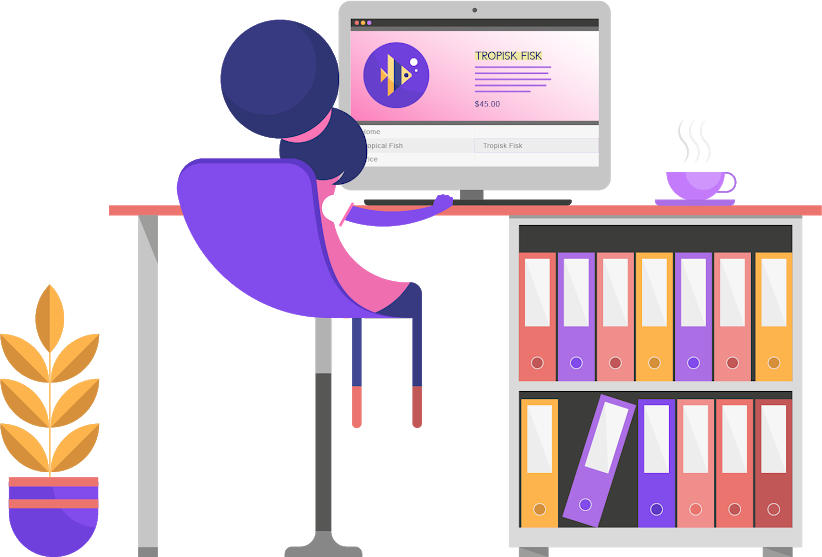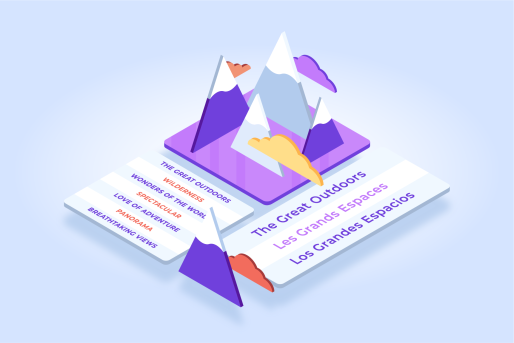Nothing helps a brand assert themselves and clearly state a mission quite like tone and voice. The language used to convey top marketing messaging is typically the first way an audience receives information about what is being offered by way of services or products.
That’s why it is so critical to ensure that all of your brand’s messaging, from website copy to marketing emails, hits the right tone and voice -- even when that content is being translated.
Translators would need to be knee-deep in your content to convey the right brand messages in other languages.
But since translators can’t exactly read your mind, and tend to handle many projects for many brands, you’ll have to help them help you! That’s where Linguistic Assets come in.
Stay On Brand with Linguistic Assets
When localizing content for a new audience, translators strive to keep content as consistent and close to the original meaning as possible, while adapting language for a different region.
Without any guidance, this can feel like shooting in the dark for translators. That’s exactly where powerful resources like linguistic assets come in.
At Smartling we offer several linguistic assets to empower translators. The benefits of these tools are profound as they help to ensure projects are more accurate and require less revisions -- all while saving customers money, and speeding up the entire cycle of translation.
Three Distinct Areas of Linguistic Assets
There are three major Linguistic Assets that brands can leverage to ensure consistent and high quality translations that maintain brand style and tone throughout every form of content.
Style Guides
Smartling’s Style Guide is a pre-populated and accessible feature in the CAT tool (computer-aided translation) that includes rules about your content formatting preferences, writing tone, and overall style.
A Style Guide is the text equivalent of marketers referencing brand design guidelines surrounding colors, fonts, and voice.
We’re talking nuance around capitalization, target language conventions, reference materials, and more.
All these moving parts help to build and solidify messaging that translates effectively to your desired audience by ensuring high quality and consistent language.
Glossaries
The Glossary is a resource within Smartling’s translation platform which lists key terms and instructions on how to individually handle each unique segment.
Translators will have pre-filled instructions regarding your definitions, parts of speech, notes, variations, synonyms and antonyms. This cuts down on errors, removes the guesswork, and establishes consistency.
By adhering to your brand’s determined terminology, translators are empowered to create content that will hit the intended meaning, and lessen the chance for messaging to get lost in translation, if you will. (wink emoji)
Translation Memory
Quite true to its name, Translation Memory (TM) is an ever-evolving database of all your brand’s previously translated content. It’s pretty high tech stuff, folks.
Every single time a new segment (like a word or phrase aka a “string” in Smartling terms) is translated, your TM automatically notes this new string and instantly creates a new entry within your existing Translation Memory.
The benefit here is also two fold: not only do translators have to spend less time worrying about consistency in their translations, but your brand saves money every time the TM is leveraged, only paying for each translation once.
Consider your brand’s Translation Memory Management system as a helpful Big Brother, minus the looming creepiness.
Help Translators Help You With Linguistic Assets
When translators have all of these crucial elements at their fingertips, it benefits the customer and the end user.
These linguistic assets help provide direction and guidance for translators to ensure your content always conveys the right voice and tone, while also cutting down on the time spent for each individual translation. That's why its important to not only provide translators with linguistic assets, but to update them regularly as well.
Think about it this way: if you were sending a web developer specifications to design your new web-page, would you let them choose what color they think works best, or would you want to ensure their color choice matches the rest of your brand image?

Well, the same goes for the actual text in your content. Since translators aren’t as familiar with your brand’s voice and style as you are, they may not provide translations that provide the same experience to your end-users.
But with linguistic assets, brands can ensure they are positioning their translators to create high quality content that maintains the same style and tone throughout.
Convey The Same Experience, No Matter The Language
Apple is one example of a strong brand tone and experience throughout all of their content.
If we are to think about Apple’s tone, we would likely agree it is informal and approachable while remaining commanding with a strong focus on quality.
All of these characteristics are subtly conveyed through their tone and the language they use.
To ensure that this same tone is carried across language, Apple must have a meticulously crafted style guide and glossary for their translators. There are specific words that Apple loves to emphasize to help convey a feeling.
These would be entries within a Glossary to tell the translator what word to use in the target language -- for example, the translation for “Beautiful” in another language might not carry the same connotation that the word does in English.
So, the glossary entry for “beautiful” would provide translators with the proper guidance on what word to use in the target language.
Because linguistic assets provide translators with a reference point for working with your brand, enabling them to better adhere to the feeling and terminology associated with your brand, translators can carry over that simple and elegant vibe that Apple is known for.
Smartling Is Here To Help
Smarling has so many unique ways to improve your end product. We have your back via our Linguistic Assets and would love to hear from you with any questions.
Speak with one of our experts today to learn more about how we can help your brand #movetheworldwithwords.
About Laura
Laura Wyant is a freelance digital strategist and writer/editor. She is currently working with start-ups, tech companies, and health and healing spaces. Laura has been contributing to the Smartling blog on topics around cloud translation, digital strategy, and overall creative translation process. When she isn’t working in media, she is working to educate herself on matters such as intersectional women’s health and advancements in technology.








